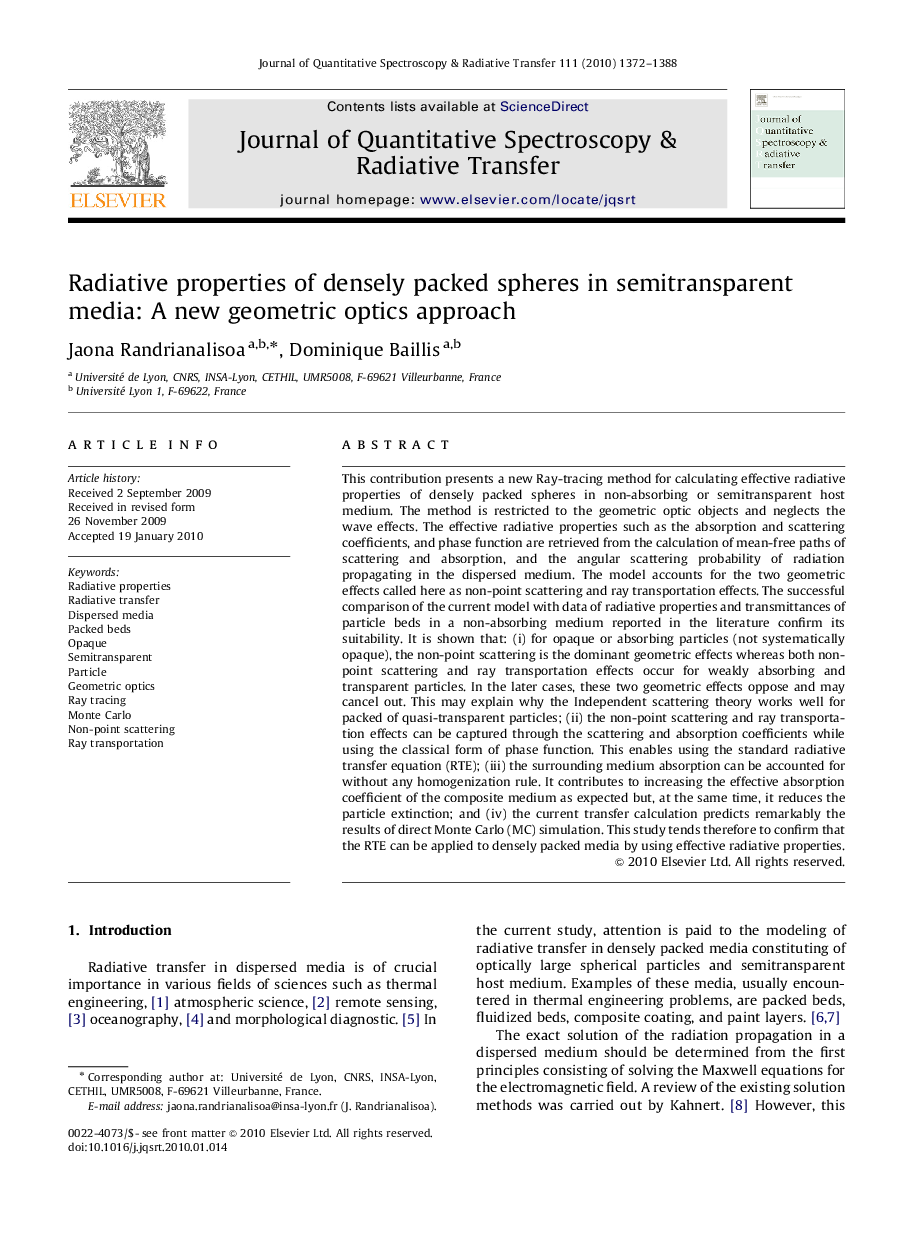| Article ID | Journal | Published Year | Pages | File Type |
|---|---|---|---|---|
| 5429384 | Journal of Quantitative Spectroscopy and Radiative Transfer | 2010 | 17 Pages |
This contribution presents a new Ray-tracing method for calculating effective radiative properties of densely packed spheres in non-absorbing or semitransparent host medium. The method is restricted to the geometric optic objects and neglects the wave effects. The effective radiative properties such as the absorption and scattering coefficients, and phase function are retrieved from the calculation of mean-free paths of scattering and absorption, and the angular scattering probability of radiation propagating in the dispersed medium. The model accounts for the two geometric effects called here as non-point scattering and ray transportation effects. The successful comparison of the current model with data of radiative properties and transmittances of particle beds in a non-absorbing medium reported in the literature confirm its suitability. It is shown that: (i) for opaque or absorbing particles (not systematically opaque), the non-point scattering is the dominant geometric effects whereas both non-point scattering and ray transportation effects occur for weakly absorbing and transparent particles. In the later cases, these two geometric effects oppose and may cancel out. This may explain why the Independent scattering theory works well for packed of quasi-transparent particles; (ii) the non-point scattering and ray transportation effects can be captured through the scattering and absorption coefficients while using the classical form of phase function. This enables using the standard radiative transfer equation (RTE); (iii) the surrounding medium absorption can be accounted for without any homogenization rule. It contributes to increasing the effective absorption coefficient of the composite medium as expected but, at the same time, it reduces the particle extinction; and (iv) the current transfer calculation predicts remarkably the results of direct Monte Carlo (MC) simulation. This study tends therefore to confirm that the RTE can be applied to densely packed media by using effective radiative properties.
